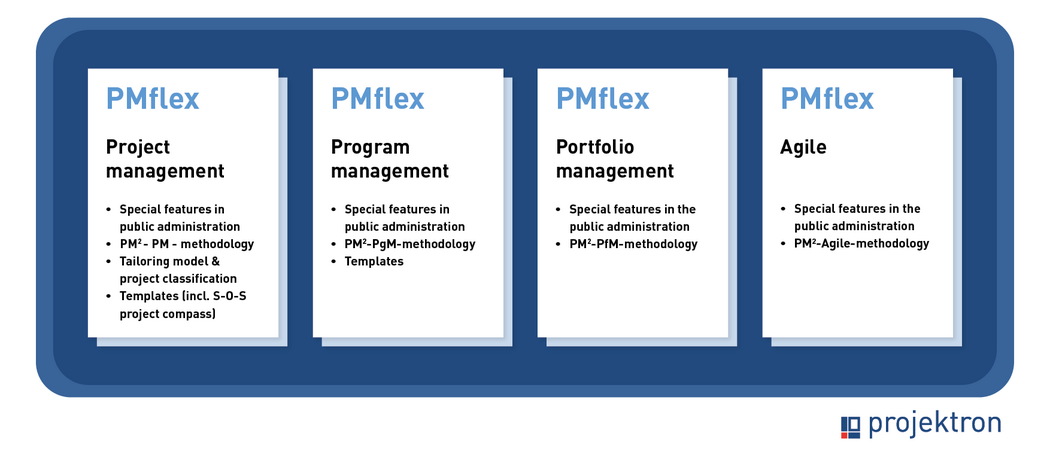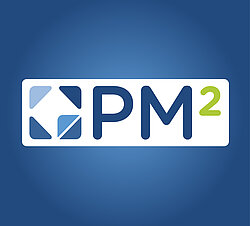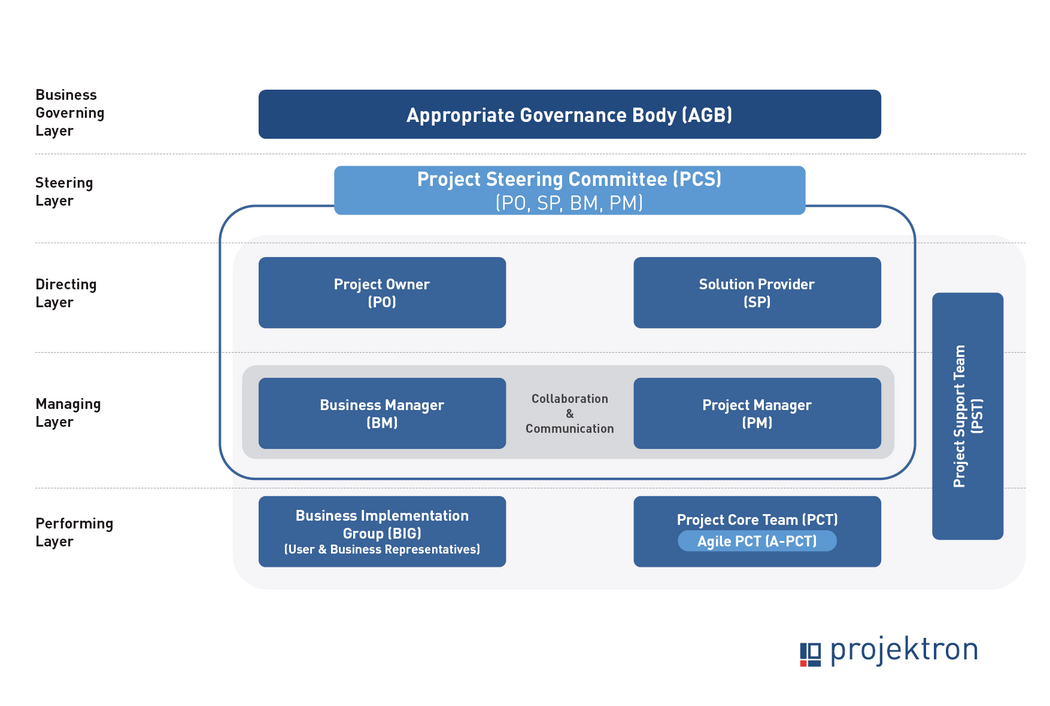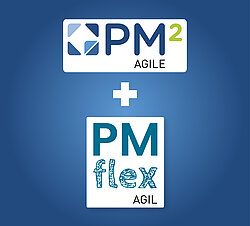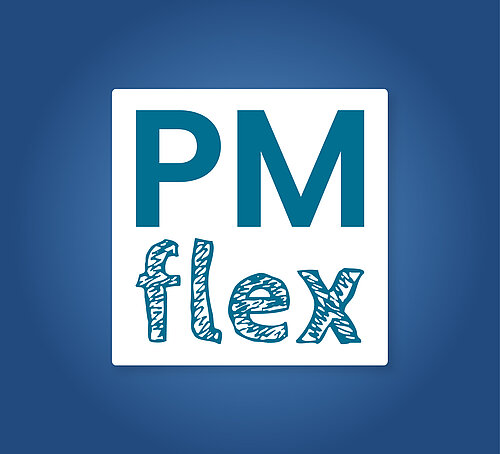10/30/2024 - Articles
PMflex: Flexible project management for the public sector and beyond?
PMflex offers an innovative solution for project management in the public sector that focuses on flexibility and adaptability. In this article, you will learn how PMflex helps to manage projects more efficiently and to better address the specific requirements of public administration. Discover how PMflex helps you to manage projects successfully and future-proof.
The number and complexity of projects in public administration are increasing, as are the associated costs and challenges. Effective project management is indispensable in this dynamic environment. The competence center for (large-scale) project management of the Federal Advisory Center at the Federal Office of Administration has therefore developed the PMflex project management standard. Discover how PMflex supports public administration in successfully implementing projects and meeting the challenges of the future.
Contents:
- What is PMflex?
- Where does the PMflex methodology come from?
- What makes PMflex so flexible?
- Who developed PMflex and who uses it?
- What roles and responsibilities are there after PMflex?
- What does the project life cycle look like in PMflex projects?
- Tailoring – the right size for every project with PMflex
- PMflex agile
- Many methods – one software
- Is PMflex catching on? A critical assessment by the author
What is PMflex?
PMflex was developed specifically to meet the requirements of the public sector and to support agile project management with a flexible, adaptable framework. PMflex is particularly geared towards the needs of public administration and offers a solution that makes it possible to manage projects more efficiently and to react better to changes. PMflex is an integrated project management system. The current version 1.01 was published in June 2023.
The PMflex standard consists of the following four guides:
PMflex project management | PMflex program management | PMflex portfolio management | PMflex agile |
|---|---|---|---|
| This guide provides basic project management concepts and methods, including a project governance structure, process guidelines, templates and guidelines for their use. It forms the foundation for the entire PMflex project management system. | This guide extends PMflex project management to include recommendations for action and tools for program management. It contains techniques for effective reporting on the benefits of the program, its tracking and appropriate communication with top management and key stakeholders. | This guide offers methods and techniques for comprehensive structuring and control of project and program portfolios. It adds a strategic component to PMflex project management to effectively address the challenges of aligning and coordinating complex portfolios. | This guide complements PMflex project management with agile methods for project work. In view of today's fast-moving and complex projects, it offers an additional repertoire of agile methods to deal appropriately with their complexity and frequently changing requirements. |
Further building blocks
There are also building blocks for dissemination and knowledge transfer, such as networks and a teaching program.
Where does the PMflex methodology come from?
It is based on the PM² project management methodology of the European Commission and incorporates elements of the S-O-S method of the (large-scale) project management competence center.
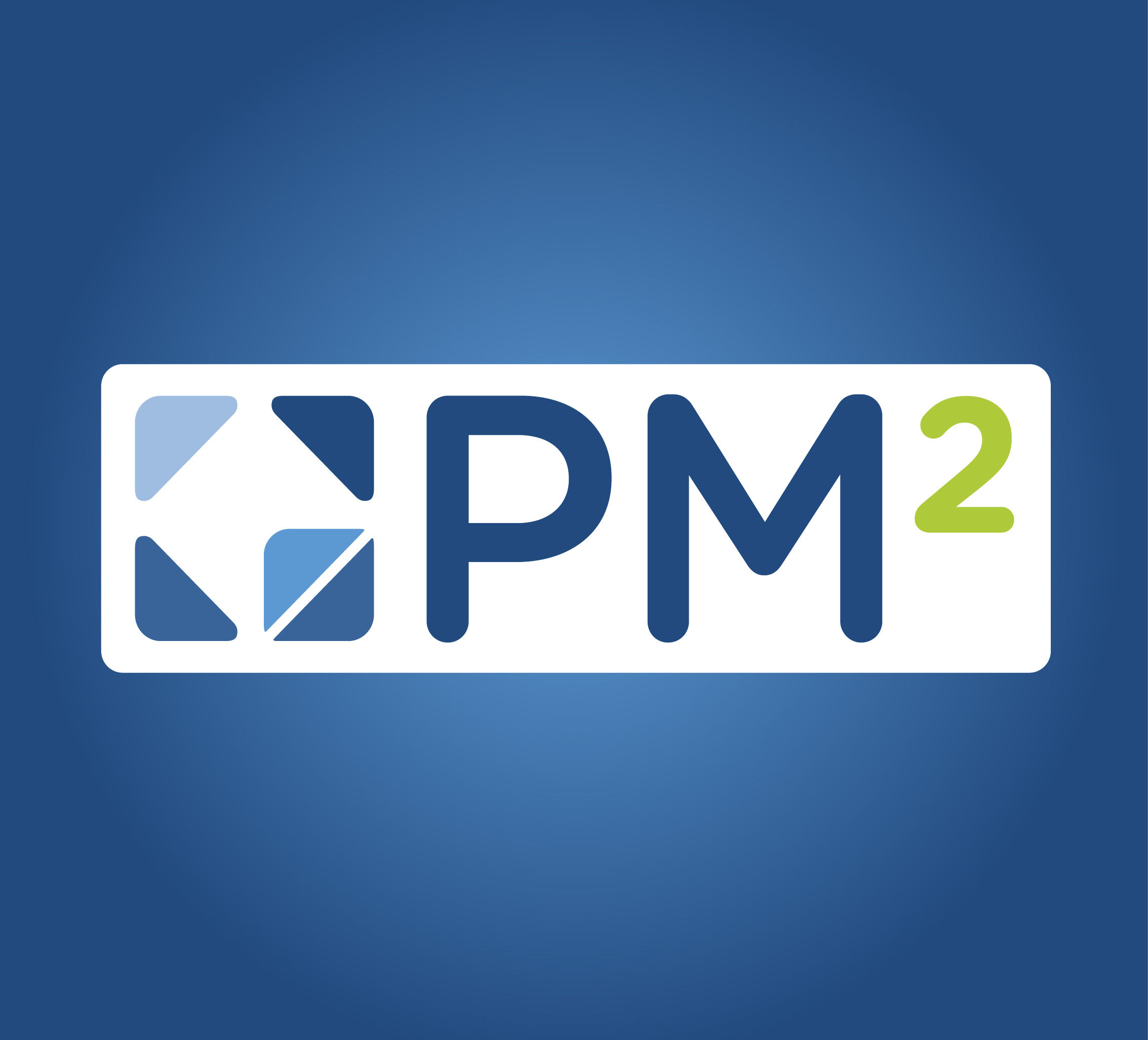 | Specifically tailored to the needs of public administration, PM² (pronounced PM squared) has already proven itself in numerous projects for the European Commission and other European organizations. PM² integrates globally recognized project management practices. This method offers a comprehensive project management ecosystem with program and portfolio management, as well as agile methods, which are essential for successful project implementation. PM² is easy to implement and easy to adapt. It is freely available via open access from the European Commission. |
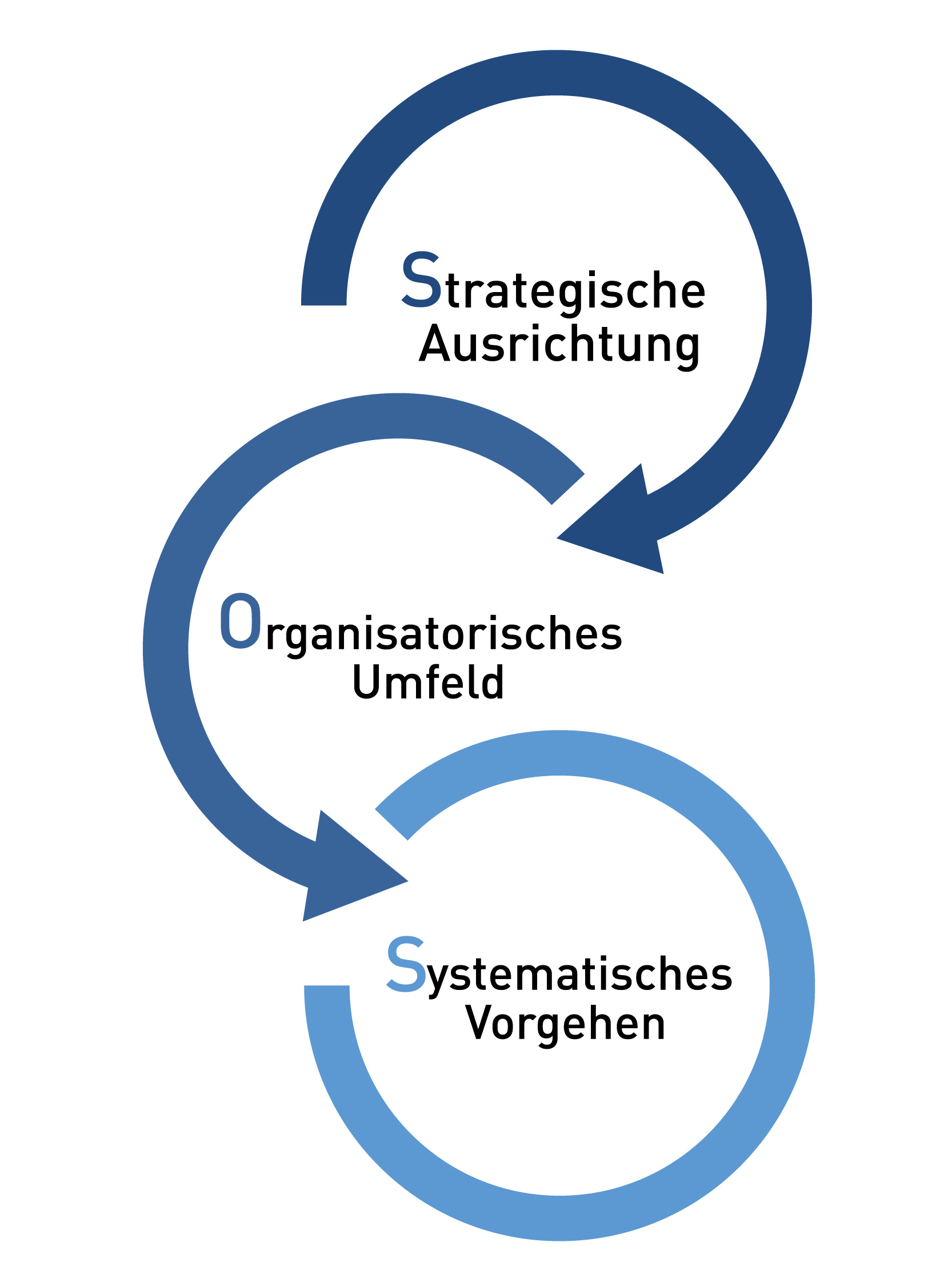 | The S-O-S method is a comprehensive methodology used primarily in large-scale projects. It complements existing project management methods by reviewing 13 critical success factors for project success and documenting the current status in nine important project management areas. The S-O-S project Since the S-O-S method and its associated project compass have been successfully used in many projects, they have been integrated into PMFlex. |
What makes PMflex so flexible?
The name “PMflex” is derived from “project management” (PM) and the term “flexible” (flex). The “flex” in the name emphasizes the flexibility of the method, which is specifically designed to adapt to the different requirements and conditions of projects in public administration.
- Adaptability: PMflex is designed to flexibly adapt the PM² methodology to the specific needs of different project classes in public administration. This means that the method is not rigid, but can be modified depending on the project type, size, complexity and specific requirements.
- Wide range of applications: The flexibility of the method allows it to be applied in different contexts, from small, less complex projects to large, complex and cross-departmental ones. PMflex is suitable for a wide range of project types, including IT projects, organizational changes and strategic initiatives.
- Tailoring model: A central element of PMflex is the tailoring model, which provides detailed instructions for adapting the PM² methodology to specific project requirements. This increases the practicality and effectiveness of the method in different administrative environments.
- Integration and extension: PMflex not only integrates the proven PM² methodology of the European Commission, but also extends it with additional content and procedures relevant to public administration. This includes special quality assurance tools, such as the S-O-S Project Compass, and the consideration of regulatory and legal requirements.
PM²: A proven framework for successful project management in Europe
PM², the methodology developed by the European Commission, has established itself as one of the leading project management methods in Europe. It combines the best aspects of other methodologies, such as PRINCE2 and PMBOK, and adds specific elements tailored to the requirements of European projects. Find out why more and more organizations in Europe are turning to PM² to manage their projects efficiently and achieve the desired results. Discover how you can implement this methodology in your organization to ensure the success of your projects.
Who developed and designed PMflex and who uses PMflex?
PMflex was developed by the Competence Center (Large) Project Management (CC GroßPM) of the Federal Advisory Center in the Federal Office of Administration. It was designed to meet the needs of public administration, but has also proven useful in other organizations. PMflex users are often companies and organizations that have complex or varying project requirements, such as in software development or in areas that favor iterative, user-centered development. PMflex is particularly useful in sectors where customer satisfaction and responsiveness to change are crucial. It offers both flexibility and structure and is therefore used in both large and medium-sized companies that appreciate a hybrid management approach and want to rely on the agile success of methods such as Scrum and Lean. PMflex is used by project staff, project managers and management levels to effectively control and monitor projects and to strategically structure and control programs and portfolios.
What roles and responsibilities are there in project management according to PMflex?
In a PMflex project, the roles and responsibilities are divided between two main parties: the client's and the contractor's.
Client side
- Project owner (PO): This person is the central player. They are the project client and are largely responsible for defining the business objectives. They ensure that the project results are aligned with the defined business objectives and bear overall responsibility for the success of the project. They later become the owners of the project results.
- Requirements Manager (BM – Business Manager): Supports the project owner in day-to-day business and in defining business goals. The requirements manager works closely with the project manager and coordinates customer-related activities and roles.
- Requirements Team (BIG – Business Implementation Group): Provides the requirements manager with technical expertise as needed. This team is made up of representatives from the organization and user groups and is responsible for planning and implementing business changes.
Contractor side
- Solution Provider (SP) – Takes overall responsibility for the project results and represents the interests of those who outsource the project results. They work closely with the project owner to define and implement the business objectives of the project and appoint the project management.
- Project Manager (PM)
- Project Core Team (PCT): This team is responsible for creating the project results. The composition and structure of the team depend on the size and type of project.
Other roles in the PMflex project
- Project Support Team (PST): This team can be implemented as needed to provide administrative support to the core project team.
- Project Steering Committee (PSC): This committee is responsible for project leadership, controlling and monitoring the project at a high level. This committee consists of the project owner, the requirements manager, the solution provider and the project management.
- Appropriate Governance Body (AGB): This body has a strategic function and is responsible for approving projects, agreeing project objectives and releasing the necessary resources.
Project roles operate at five different levels of a project organization: Board level (AGB), senior management level (PSC), management level (PO & SP), administrative level (BM & PM) and operational level (BIG & PCT). A RASCI responsibility matrix or project-specific organizational chart helps project team members to know who plays which role in the project and what responsibilities are associated with it.
Other parties involved
In addition to these structured roles and responsibilities, effective identification and supportive management of all relevant stakeholders is crucial to the success of the project. Stakeholders are individuals or groups that influence or are affected by the activities, services or results of a project.
What is the project life cycle in PMflex projects?
As in the PM² project life cycle, PMflex structures the course of the project into the four phases of project initiation, planning, execution and completion. Each phase is supported by a process group called “monitoring and control”, which ensures that the project stays on track and achieves the desired results. Similar to PM², each phase in PMflex ends with the achievement of previously defined objectives, and only after these objectives have been achieved can the transition to the next phase take place. These phase transitions serve as checkpoints where the planning maturity, implementation maturity and, finally, the project's readiness for closure must be demonstrated. Each phase within the PMflex process framework includes various key artifacts and has a specific owner or assigned role to ensure that all aspects of the project are adequately addressed.
PMflex Project Phase 1: Initiation Phase
The initiation phase marks the beginning of every PMflex project and is of crucial importance for the success of the subsequent project planning and implementation. Its main objective is to define the project goals and constraints clearly and precisely. Particular attention should be paid to ensuring that these goals are always aligned with the strategic goals of the organization.
- A central part of this phase is the initiation meeting, where project initiators and project owners come together to discuss all the preliminary information about the project and determine the next steps. This meeting results in a better understanding of the project context and the decision to proceed with the creation of the project initiation request. All potential stakeholders who can contribute to the creation of the documents in this phase are invited to this meeting.
- The project initiation request, which is created by the requirements manager, forms the foundation of the project and includes an estimate of costs and effort, sets the time frame for completion, describes internal or external effects of the project, emphasizes the relevance of the project, defines success criteria and identifies risks.
- Once the project initiation request has been created, the requirements manager prepares the business case. This document explains the reasons for the project and includes a description of the business context, a problem and project description, the business justification for the project, strengths, weaknesses, opportunities and threats, as well as detailed cost and time schedules.
- The project charter, created by the project management, forms the basis for detailed project planning and defines the project objectives in terms of content, timing, finances and quality, as well as general requirements, risks and constraints. In addition, project milestones and deliverables are clearly identified.
After the business case and the project charter have been created and approved, these documents are sent to the project steering committee or an appropriate decision-making body, which decides whether to accept or reject the project.
To complete the initiation phase and move on to the planning phase, the activities and artifacts of the initiation phase must be reviewed and approved in order to achieve what is known as planning maturity for the project.
PMflex Project Phase 2: Planning Phase
In the planning phase, the defined project objectives are developed into a concrete plan for implementation.
- The planning kick-off meeting marks the beginning of the planning phase and serves to ensure that all project participants are clear about the project scope and the expectations of all important stakeholders. During this session, project plans are discussed and initial project risks are identified. The project management presents the main elements of the project charter and schedule, as well as the intended project management approach, and raises awareness of key project roles, risks, constraints, and assumptions.
- The project manual, created by the project management in collaboration with the requirements manager, is one of the most important deliverables of this phase. Together with the project work plan, it forms the basis for managing and executing the project and documents objectives, dependencies, constraints and assumptions, describes the selected project management approach, defines critical success factors, describes roles and responsibilities, identifies project processes and guidelines, and makes adjustments to the underlying project management methodology.
- The project stakeholder matrix, also created by the project management and the requirements manager, lists all relevant stakeholders, their contact details and roles in the project.
- The project work plan, which is created in this phase, refines the project scope and defines and organizes the specific project work and deliverables. Its components include the work breakdown structure, detailed effort and cost estimates, as well as a schedule and timeline.
The planning phase ends with the review and approval of the phase activities and artifacts by the project steering committee, which means that the project has reached execution maturity and can enter the next phase.
PMflex Project Phase 3: Execution Phase
The execution phase involves the practical implementation of the project results defined in the project work plan. During this phase, the project team carries out the planned activities and works continuously to achieve the defined goals.
- The kick-off meeting ensures that the entire project team is familiar with the key components and rules of the project. The business case, project charter, project handbook, project work plan and all other relevant project plans and protocols are discussed here, and minutes are taken.
- Project coordination is crucial to provide ongoing support to the core project team. The project management ensures that resources are assigned to the appropriate activities, regular quality checks are carried out, and communication with project team members is maintained.
- Quality assurance is the responsibility of the project management and aims to ensure that project work meets established quality standards, methodologies, and best practices.
- Project reporting is an important part of the execution phase to continuously communicate project progress and performance to stakeholders and controlling. This includes the project status report, project progress report, quality review log, contractor status report, and other custom or ad hoc reports.
- Information distribution is carried out regularly in accordance with the communication management plan to inform and involve the stakeholders.
To complete the execution phase, the required activities and artifacts are reviewed and approved, first by the project management and then by the project steering committee. This makes the project ready for closure.
PMflex project phase 4: closure phase
The final phase, as the last phase of a project, focuses on completing all project activities and documenting the final state of the project. The finished results are officially handed over to the project owner. The following activities are carried out in this phase:
- In the project closing meeting, the project management invites the core project team to discuss the project experiences, evaluate the project performance, discuss lessons learned and best practices, and make recommendations for future projects. Lessons learned and recommendations after the end of the project serve to learn from the project experiences and improve the way future projects work.
- The project completion report is created by the project management after the project completion meeting. This documents best practices, difficulties, solutions to problems encountered and serves as a knowledge base for future projects.
- The administrative closure takes place after the project closure report has been completed. The project management ensures that all project results have been accepted by the relevant stakeholders and that the project closure reports and all documentation have been checked, organized and archived. The project team is officially dissolved and all resources released.
The project is officially closed as soon as all activities of the closing phase have been completed and the project owner has approved the project. The administrative closure marks the transition from “project mode” to “operating mode”.
Project control and project controlling in PMflex
The monitoring and control activities are of crucial importance for the entire life cycle of a PMflex project and reach their peak during the execution phase.
The objectives are:
- measure ongoing activities
- Evaluate project performance against project plans
- Identify and implement corrective action as necessary
The project management is responsible for a variety of activities and the creation of a series of artifacts during this phase.
The activities can be divided into three subject areas:
- Administrative activities: These include all administrative processes according to the project management plans, as well as activities for outsourcing, implementation, business implementation and delivery acceptance according to the project-specific plans.
- Monitoring activities: These include the ongoing monitoring of project activities to measure overall performance in the project. Performance is evaluated against a predefined baseline.
- Control activities: These involve developing, planning, proposing, and implementing corrective action to address existing or potential performance risks or issues.
Project management must diligently execute these activities to ensure the overall success of the project.
The monitoring and control artifacts include the project work plan and various project logs that are regularly updated as new information becomes available. These include the risk log, issue log, decision log, change log, and various checklists such as the “phase completion check” and “quality check,” which were taken from the S-O-S project compass and help the project management team to control the project.
Tailoring – The right size for every project with PMflex
Understanding and consciously managing the context, objectives and working environment is crucial to the success of a project. To create a workable environment, it may be necessary to adapt the project management method to the project. This process is called tailoring.
The PMflex tailoring model offers specific recommendations for adapting the PM² methodology, particularly for the use of project artifacts. Thanks to this adaptability, the PMflex method is a flexible project management approach for public administration.
The PMflex tailoring process is divided into three steps.
Step 1: Integrating the project into the organization
First, the project is integrated into the organization's framework and processes.
This includes:
- Selecting the project organizational form, which, depending on the project, can be integrated into the organization as a function-oriented or influence-oriented project organization, as an autonomous/pure project organization or as a matrix project organization.
- Determining the project management approach, which can be either classic, agile or hybrid.
- Integrating the project into the processes of the organization, including programmatic, operational and human resources processes.
Step 2: Adapting the method to the project
The chosen project management method is adapted to the respective project, with PMflex offering project classification by complexity. This divides projects into classes S, M and L. Depending on the class, certain steps, roles and artifacts may be omitted or the scope of project management may change.
- Project class S comprises routine projects with limited scope, a low time and financial investment and a minimal number of employees. Only a minimal structure is needed, with mandatory roles such as client, project management and project core team. Due to the low communication effort, S-projects require fewer project artifacts, but focus on clear project definitions, structured work planning and an accompanying project controlling.
- Projects of class M have a more complex structure, higher effort and a larger number of participants than S projects. In addition to the roles of class S, M projects require additional roles such as steering committee, project office and sub-project management. Due to the increased coordination and communication effort, M projects require more artifacts to ensure coordination, manage deliverables and control the project.
- Project class L are large-scale projects with very high complexity that require large teams and extensive participation. In addition to the roles of classes S and M, L-projects require additional specific roles such as requirements manager, requirements team and user representation. Due to their structure and duration, L-projects require extensive use of PMflex artifacts to ensure seamless documentation.
You can use the following table to determine which class your project falls into:
Factor | 1 point | 2 points | 3 points |
|---|---|---|---|
Project governance | Simple project structure (client, project manager, core project team) | More complex project structure (steering committee, project manager, sub-project manager, project core team) | Highly complex project structure (decision-making committee, steering committee, project manager, sub-project manager, work package manager, project core team, project support team, other roles as required) |
Number of project team members | max. 5 people | 6 - 19 persons | 20 or more people |
Stakeholders | Only internal actors (a few participating offices within the authority) | Several internal actors or participation of external service providers (several/involved internal bodies/other authorities or participation of external service providers) | Many internal actors and external service providers (many involved bodies/other authorities and external service providers) |
Evaluation options and restrictions | Basic analysis tools available, no integration of external data sources | Advanced analytics possible, e.g. visitor flow, bounce rates, event tracking available, limited retargeting capabilities | Comprehensive analysis functions, e.g. machine learning-based reports, integration into advertising platforms for targeted marketing |
Project duration | < 3 months | 3 - 12 months | > 1 year |
Strategic contribution | Specialized strategy | Behördenstrategie | High level of political attention or government program |
Empirical value | Routine (repeat project, a lot of experience, clear task) | Potential/Partly known (some experience available, task with scope for content-related design) | Novel (new project, unclear objective, no experience in the organization) |
Total cost | < €500,000 | 500,000 € to 10 million € | > €10 million |
Each project can be classified according to the criteria in the left column. This results in an overall score. Projects in class S have a total score of 10 or fewer points, projects with a score of 11-16 points correspond to class M, projects with 17 or more points are classified as L.
Step 3: Continuous Improvement
The tailoring should be regularly reviewed and adjusted based on project planning and execution. Major class L projects should conduct systematic reviews of the tailoring, supported by tools such as the S-O-S project compass and lessons learned.
PMflex agile
The aim of PMflex is to make public sector projects more effective and efficient by also enabling simple and needs-based implementation of agile working methods. Agile working enables teams to respond quickly to changing requirements and thus improve service quality. PMflex therefore offers its own guidelines for agile project management based on the European Commission's PM² Agile method.
Agile roles, responsibilities, topics, events, artefacts, tools and techniques in PMflex correspond to those of the PM² Agile variant.
PM² Agile and PMflex Agile: Agile project management for the public sector
In the public sector, agile project management methods are becoming increasingly important. PM² Agile and PMflex Agile each offer customized approaches to making projects more efficient and flexible. PM² Agile combines proven methods of the European Commission with agile practices, while PMflex Agile offers a specially developed, holistic solution for public administration. In our article, we compare these two approaches and show which one is best suited to your specific requirements.
Many methods – one tool: Projektron BCS offers flexibility and structure
Although all methods can be used for project management in the public sector, the choice of the best method depends on the specific requirements of the project, the organizational structure and the regulatory environment. There is no “one-size-fits-all” solution, and often the choice of a method can be influenced by the specific conditions and requirements of the project in the public sector.
Projektron BCS is a versatile project management software. BCS offers the flexibility and adaptability required for PMflex and PM², as well as the structural and documentary requirements for PRINCE2, HERMES, V-Modell and V-Modell XT. The strength of Projektron BCS lies in its ability to map both flexible and highly structured methods using configurable project planning assistants, workflows, extensive documentation functions and support for different project types.
See for yourself and start your Projektron BCS test.
Is PMflex catching on? A critical assessment by the author

About the author
Kai Sulkowski is an editor in the marketing department of Projektron GmbH and is deeply involved with current trends and developments in project management. Through his research and engagement with PMflex and PMflex Agile, he has developed a sound understanding of the method, which enables him to communicate complex concepts in a practical and understandable way.
The PMflex guideline from CC GroßPM promotes standardized terminology and processes for better project communication and collaboration. It integrates the European Commission's PM² methodology and expands it into PMflex, a flexible project management approach. The guide consists of three parts: special features and success factors in public administration, the PM² methodology and its adaptation for different project classes. Supplementary regulations such as the V-Modell XT Bund are not replaced. The PMflex guide offers practical standards and also includes additional modules for knowledge transfer.
PMflex has the potential to become established in areas where a combination of fixed project structures and flexible working methods is required – for example, in innovative technology companies, start-ups or in industries that have to change dynamically, such as IT departments in the wake of digitalization in the public sector or the healthcare sector. PMflex could also be a valuable solution in regulated industries such as finance, where compliance and documentation requirements are high. Its flexibility makes PMflex attractive for teams that work iteratively across projects but still want to benefit from a basic structure.
To establish itself in the long term, PMflex would have to raise awareness of its advantages, particularly its hybrid approaches. In an increasingly saturated market with established standards, it could be difficult to establish a new standard unless it offers significant advantages or meets specific niche requirements. However, the lack of universal standardization and broad recognition could affect PMflex in terms of scalability and market penetration if large organizations rely on proven, widely used standards.
PMflex could therefore remain particularly interesting for specialized applications in the longer term, but to achieve widespread market acceptance would probably require additional investment in awareness, certification and clearer structuring. To implement projects according to the PMflex standard, it is recommended to use project management software that can adequately map the project phases, roles, responsibilities and steps of the PMflex methodology. Projektron BCS offers users of the methodology the ideal support for efficiently implementing their PMflex projects.
More interesting articles on the Projektron blog
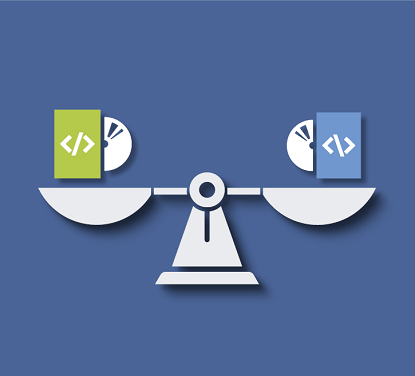
Project management software comparison
Get an up-to-date overview: We compare 15 of the most popular and best project management software solutions. Start here, discover the market and compare for yourself!
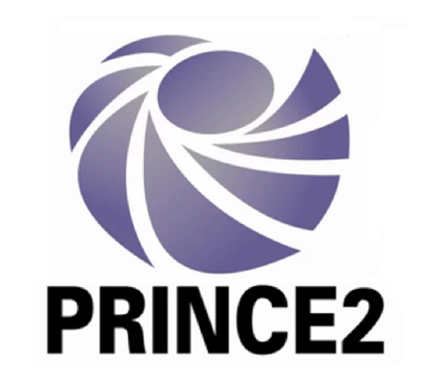
PRINCE2 in project management
PRINCE2 is a process-oriented PM method, can be scaled and places the benefits of a project at the center of project management. Our specialist article provides an introduction to the basic idea, strengths and weaknesses of the PRINCE2 method.
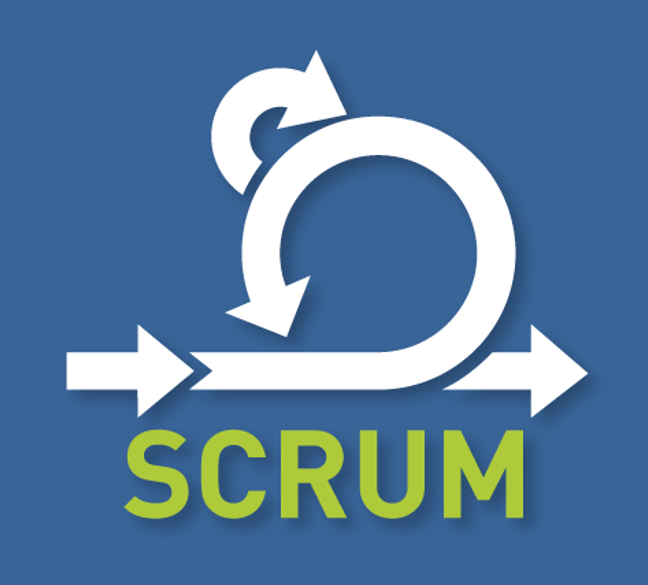
Scrum in software development
When it comes to agile software development methods, there is one term you cannot avoid: Scrum. But what exactly is Scrum and how does it develop its strengths in software development?

Hybrid PM
Classic or agile? If the decision between these two approaches is difficult, a combination of two or more project management methods is probably the right way to go. Find out everything you need to know about hybrid project management in this article.
